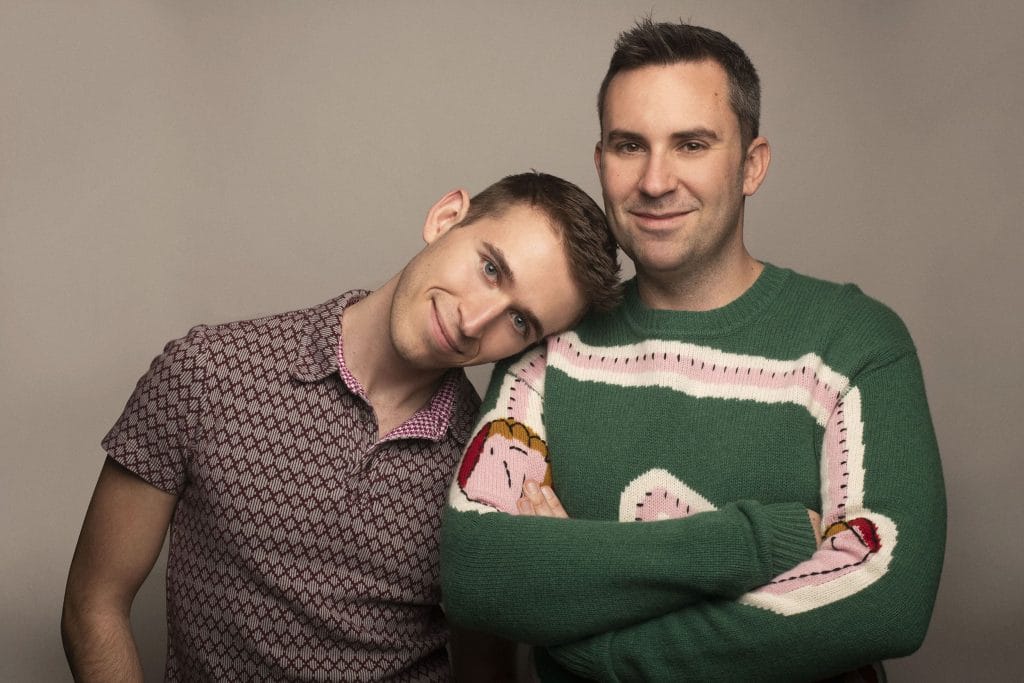
Founded in 2015, Superfine! is a contemporary art fair that connects emerging and mid-career artists with collectors who have the motivation and means to purchase their art. Currently hosted in six major American cities, Superfine!’s fairs seek to dramatically improve the art fair experience for both the exhibiting artists and their buyers.
Unlike traditional art fairs that rely heavily on word of mouth and personal relationships to draw attendees, Superfine! invests heavily in digital marketing to promote their fairs, and focuses their efforts on attracting the right kind of buyers for their exhibiting artists.

The Superfine! co-founders: Managing Partner James Miille (left) and CEO Alex Mitow (right).
Superfine!’s business model is based on its ability to balance two very different sales pipelines. On one side are the artists looking for booth space, and all the applications and screenings that Superfine! has to manage as a result. The other side is the attendee pipeline which is focused on attracting ticket-buyers.
Before he discovered Nutshell, Miille tried using Salesforce to track his communications with potential exhibitors.
Salesforce was annoying for a few reasons. It took about a month just to learn how to use it, and that actually caused a huge dip in our sales. Even when we did get the hang of the product, it felt like we weren’t using a fraction of what it offered, but also that we didn’t need any of those other features anyway. Plus, it never really made our sales more consistent. I think I might have had some better sales weeks before using Salesforce.”
Eventually, the stress of using Salesforce discouraged Miille from using it consistently, and he went hunting for a better solution.
I looked through a list of 10 or 15 different CRMs and Nutshell seemed like the most natural fit. The interface was beautiful, it looked really intuitive, and it just seemed like it wouldn’t be a nightmare to use. A day or two into the trial I was already using it as an integral part of our business.”
“One advantage of Nutshell is being able to see everything on the dashboard in a way that makes sense,” Miille continued. “Salesforce was too much and too little at the same time. Nutshell is the Goldilocks of CRMs. I’m able to see my quotas and know exactly what I should be doing at any moment.”
Miille uses Nutshell to track artists from their first communication to purchase, as well as nurture them after their first exhibit. “I make a task to follow up with them in three months to see if there are any other future fairs that would be a good fit for them, and put them on MailChimp lists through Nutshell so they get content throughout the year while they’re waiting for the next exhibition,” he says.
After four years of hosting art fairs, the Superfine! team has learned that success is largely data-driven. To that end, Superfine! uses Nutshell to evaluate leads, their sources, and their success rates, and uses these insights for future sales planning and to choose their marketing channels appropriately.
Unlike his experience with Salesforce, Miille says that Nutshell has resulted in Superfine!’s sales growing, not shrinking.
Because Nutshell is so intuitive and keeps us on track, it’s making our sales a lot more consistent. Before, a good week would be $12,000. Now a bad week for us is $12,000, and a good week is $40,000.”

Over the last year, Superfine! has expanded to three new cities, adding Chicago, Seattle, and San Francisco to their existing markets of New York, Washington D.C., and Los Angeles. “We’re really excited about that in terms of revenue,” Miille says. “We’re on track right now to double our revenue from last year.”
Most importantly, Nutshell has helped turn Superfine!’s sales efforts into a reliable, successful formula. “Because of the automated pipelines, our sales process has gone from throwing a ball up in the air and seeing where it lands to hitting a dart right on target,” Miille says. “I don’t have to wonder, ‘Okay, now how should I write this particular email to convince this person?’ I have a system now, it’s automatic, and it makes my life a lot easier.”
Join 30,000+ other sales and marketing professionals. Subscribe to our Sell to Win newsletter!